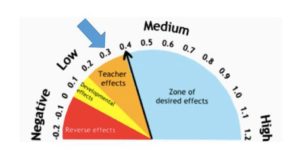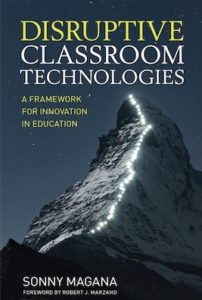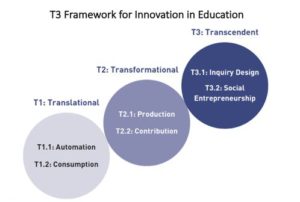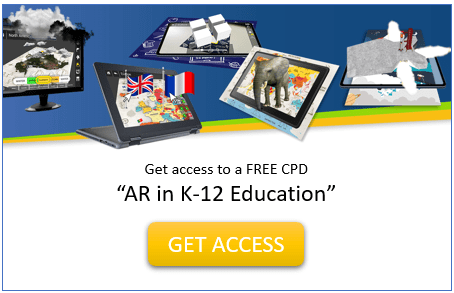Reading time: 7 minutes
Transcending the Status Quo with Teachers and Educators
Teachers are like pipers at the gates of dawn. Educators and educational leaders bear enormous responsibilities for orchestrating and shaping the future. We do so by empowering our current students to interact and develop deeper connections with knowledge, each other, and themselves, in a modern world context. This is what makes teaching the noblest, and perhaps most portentous profession.
Arguably, the modern world is experiencing a profoundly disruptive period. Across the globe, digital technologies have enabled radical transformations in nearly every imaginable endeavor from archeology to zoology. It stands to reason that educators must effectively manage modern teaching and learning tools and processes in order to better prepare students for social and professional success many years down the track. Towards that happy occurrence, national educational systems have optimistically invested billions in tax revenues to digitize traditional classrooms. School infrastructures have been updated, new and emerging tools are regularly purchased, and teachers are trained on how to use these new tools.
Modern World
Sadly, the evidence on the impact of these investments does not match the optimism. Despite decades of evidence-free propaganda bombarding teachers and educational decision makers about the inherently transformational nature of digital tools in schools, the reality simply does not match the hype. In fact, the average impact computer technology has had in education has been downright dismal.
A meaningful way to look at the evidence of technology’s impact in education uses a measurement called effect size—a statistical construct. It advances by internationally renowned education researcher John Hattie. One can think of effect size as a scale starting with practices that negatively impact student learning, and incrementally moving towards methods that positively impact student learning and achievement. The tipping point on Hattie’s scale of effect sizes is the average impact of the hundreds of educational interventions. This average is .4 and can also be considered the entry point for practices that have a desirable effect on student achievement (see Figure 1). We consider practices with an effect size above .4 desirable—in fact, the higher on the scale, the more desirable—anything below an effect size of .4, not so much.
Digital Tools
After reviewing over 160 meta-analyses from over 10,000 studies on the impact of computers in education, Professor Hattie observed that the average effect of digital tools in schools is an anemic .34, which is well below the zone of desirable effects. Worse still, this meager impact has not changed in over 50 years, despite vast leaps in digital technologies since the swinging 60s. The meter for innovation in education is stuck—on low.


Perhaps the main reason for this disappointing impact is that the inclusion of technologies in schools has done little to change the “tell and practice” approach to teaching and learning—the predominant pedagogical practice of our time. In this model, teachers tell students what knowledge is and what knowledge is worth knowing. Students invest their limitless capacity for investigating, thinking critically, creating, hypothesizing, and collaborating by memorizing and practicing what they’re told.
Disruptive Classroom Technologies
One implication of this problem is that if the tell and practice model remains steadfast, then we can expect the impact of new and emerging technologies—like VR (Virtual Reality), AI (Artificial Intelligence), and the Internet of Things—to be about .34 for the next 50 years or more. That my friends, is double trouble.
 Fortunately, there is indeed cause for renewed optimism—once again based on evidence provided by rigorous research. After more than 30 years of investigating the wicked problem of advancing technology and innovation in education, my colleague Dr. Robert J. Marzano and I have observed that when technology tools in use they enhance innovative practices. Practices grounded in sound research and theory, expect large to very large gains in student achievement and learning productivity.
Fortunately, there is indeed cause for renewed optimism—once again based on evidence provided by rigorous research. After more than 30 years of investigating the wicked problem of advancing technology and innovation in education, my colleague Dr. Robert J. Marzano and I have observed that when technology tools in use they enhance innovative practices. Practices grounded in sound research and theory, expect large to very large gains in student achievement and learning productivity.
I’ve synthesized my life’s work into a new book, Disruptive Classroom Technologies: A Framework for Innovation in Education. My overarching goal is to disrupt the predominant use of educational technology tools by using T3 Framework for Innovation in Education as a lens through which to view schools and schooling. The T3 Framework is an evidence-based model which increments technology usage in schools into three distinct domains: T1: Translational, T2: Transformational, and T3: Transcendent (See Figure 2).

The impact of the T1: Translational stage of technology use—that is, simply automating teaching and learning tasks, or consuming content knowledge and information through digital tools—has been historically low. Rather than placing a greater burden on teachers, advancing from the T1: Translational phase of technology use to the T2: Transformational stage engenders shifting the loci of learning experiences from teachers to students. While there is no common definition for this shift, I suggest the following: “Transformational technology use in education reflects the intentional application of digital technologies to unleash students’ learning expertise, in ways not possible without technology, to achieve ever higher levels of knowledge and mastery.” (Magana, 2017, pp. 39).
The two elements of this stage are: T2.1: Production, and T2.2: Contribution. In the former, students leverage technologies to produce digital representations of what they know (declarative knowledge) and what they can do (procedural knowledge), as well as to capture and make their thinking pathways explicit. In the latter stage, students use digital tools to design, create, share, and scale digital knowledge products with the purpose of teaching others what they know.
Digital Era
In this digital era, it is no longer appropriate to ask students what they want to be when they grow up. There is a far more important two-part question to ask of our students: “What wicked problem matters to you, and what are you going to do about it?” Thus, the final stage of technology use, T3: Transcendent, begins with student passion and concludes with students engaging in designing original lines of inquiry and applying social entrepreneurship strategies to solve wicked problems that matter to them. Doing this at least once a week—say, on Wicked Problem Fridays—will give your students ample opportunities to explore, interpret, discuss, and critically analyze knowledge and information that is important to them. Moreover, doing so will empower your students to become leaders for action who make a significant contribution to their local and extended communities.
The strategies associated with the T2: Transformational and the T3: Transcendent uses of digital tools, as I’ve defined and identified in Disruptive Classroom Technologies, have an effect size of 1.6. The impact of this effect size on student learning is equivalent to three or more additional years of student achievement in a single academic year, perhaps even more.
To Conclude
To once again quote Professor John Hattie, “Moving beyond translation and transforming current practice to transcendent uses of technology is clearly where we should go. We need to build collaborative communities of students solving problems, explaining to others (regardless of ability) and using the social media aspects of technology. This changes classroom conversations from monologue to dialogue, increasing student impact questions, and allows errors. Dealing with errors this can be transcendental. This is the core of Magana’s claims, and indeed this is how we’ll see technology really make the difference we’re after!”
No one can predict the future. However, I will make a bold prediction that together we can use guidance provided by the T3 Framework to not only disrupt the historic pattern of low technology use in education, but to transcend the expectations and limitations of organized educational systems to unlock students’ limitless learning potential. That is arguably a set of ideas worth pursuing and sharing by today’s pipers at the gates of dawn.
Bio
Dr. Anthony J. “Sonny” Magana III is an award-winning educational futurist, best-selling author, and pioneering educational technology researcher. Sonny is a highly sought-after leadership consultant, speaker, and instructional coach. For more than thirty years’ he is helping educational systems around the world realize the power of transcendent learning. The author of numerous research studies and articles, Sonny’s newest book, Disruptive Classroom Technologies: A Framework for Innovation in Education, was recently published through Corwin Press to wide international acclaim. It is also available through Amazon and Barnes & Noble.
A tireless advocate for transcending the status quo, Sonny founded and served as Principal of Washington State’s first CyberSchool in 1996, a groundbreaking blended learning program that continues to meet the needs of at-risk students in Washington. He is a recipient of the prestigious Milken Family Foundation National Educator Award and the Governor’s Commendation for Educational Excellence. An avid musician, yoga practitioner, and beekeeper, Sonny holds a bachelor of science degree from Stockton University, a master of education degree from City University (where he got with the Presidential Award for meritorious scholarship), an educational administration endorsement, and a doctorate in educational leadership from Seattle University. Sonny can be reached via Twitter @sonnymagana or at www.maganaeduction.com.

